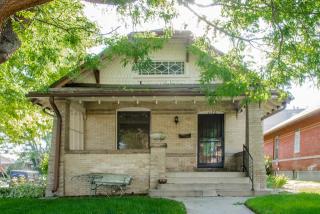In May, 1859, General William Larimer and his son staked out a cemetery called Mount Prospect, two miles east of the existing Denver settlement. In reality, Mount Prospect belonged to the Arapahoe tribe and did not become United States territory until the following year, when a formal treaty was concluded. Congress sold the land to the City of Denver in 1872 for $l.25 per acre. It was to be used for burials. The western 80 acres were used for Protestant burials, “Oriental” graves and a Potter’s Field located near the present entrance to the park on Franklin Street and East 12th Avenue. The middle 40 acres on the east were sold to the Hebrew Burial Society. Because it was then so far from the center of the city, the entire cemetery fell into neglect.
In 1890, Senator Henry Moore Teller persuaded Congress to pass an act authorizing the conversion of the cemetery to a park. Mount Prospect Cemetery became Congress Park. In 1887, the city leased “forever” 20 acres in the northeast corner of the tract to the Denver Water Company for a reservoir site. By 1904, Congress Park was becoming green — supplied by water from the Cheesman Reservoir. A southern part of the cemetery tract was sold by its owner to a real estate speculator, Samuel Morgan. The city fought the sale all the way to the Supreme Court, which in 1903 upheld Morgan’s title to the land. To prevent future sales of land designated for parks, the City Charter was amended in 1904 to prevent any sale of park land unless approved by Denver voters.
The first subdivision plat was recorded for Congress Park in 1887, with the total platting completed in 1888. The park and recreational facilities acted as a great impetus for development. By 1909, streets were improved and a number of houses built. The entire area was developed between 1900 and 1930. Since then, there has been little residential construction, except along Colorado Boulevard and north of 12th Avenue, where apartment structures have been built.



